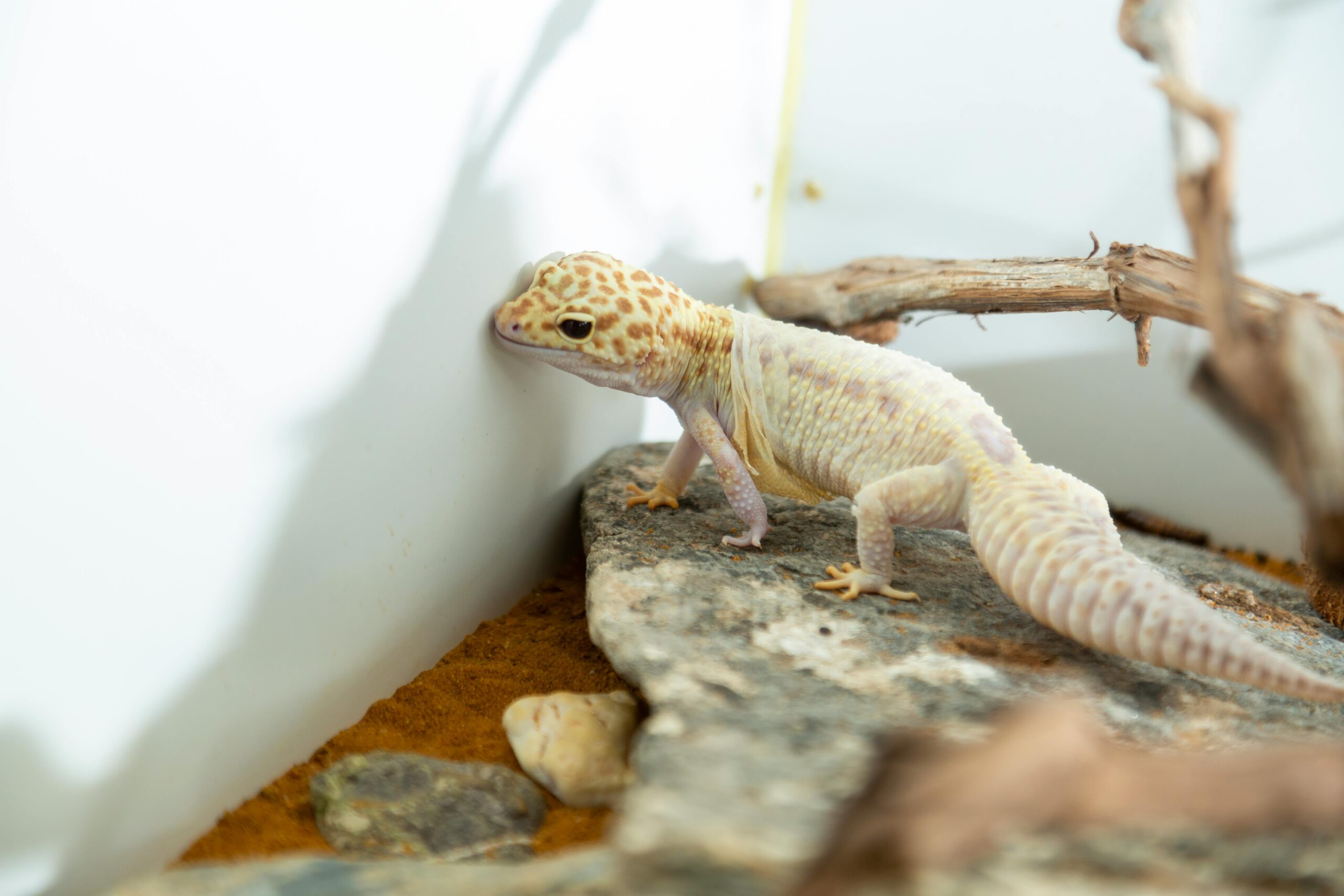Leopard Gecko
Leopard Gecko: The Friendly Lizard for First-Time Reptile Owners
With their gentle nature, quirky personalities, and unique spotted appearance, Leopard Geckos have become one of the most beloved reptile pets in the world. Whether you’re a beginner looking for your first lizard or an experienced reptile keeper, this easygoing gecko makes a fantastic companion.
Origins and Natural Habitat
Leopard Geckos (scientific name Eublepharis macularius) are native to the arid and rocky regions of Afghanistan, Pakistan, India, and Iran. Unlike many other gecko species, they are terrestrial (ground-dwelling) and are most active during the evening and nighttime hours.
In the wild, they live in dry desert environments and seek shelter under rocks or in burrows to escape the heat.
Appearance
Leopard Geckos are known for their distinctive spots and patterns, which resemble a leopard’s coat. They come in a wide variety of color morphs thanks to selective breeding, including albino, blizzard, tangerine, and many more.
Adults typically grow to 7–10 inches in length and weigh between 45–70 grams. They have fat tails (used for fat storage) and movable eyelids—an uncommon trait in geckos.
Personality and Behavior
One of the biggest reasons Leopard Geckos are so popular is their calm and docile temperament. They rarely bite, tolerate gentle handling well, and quickly become accustomed to their human caretakers.
Leopard Geckos are also relatively quiet and solitary, making them ideal for apartment living or for those who prefer low-noise pets.
Enclosure and Habitat Needs
A single Leopard Gecko can comfortably live in a 20-gallon tank with a secure lid. The enclosure should mimic a desert environment, with:
- A warm side (88–92°F or 31–33°C) and a cool side (75–80°F or 24–27°C)
- A heat mat or under-tank heater (avoid heat lamps that can dry them out)
- A moist hide to help with shedding
- Substrate such as reptile carpet, paper towels, or tile (avoid loose sand for young geckos)
- Hides or caves for security
Diet and Feeding
Leopard Geckos are insectivores and should be fed a diet of live insects like crickets, mealworms, or dubia roaches, dusted with calcium and vitamin D3 supplements. Feeding typically happens 3–4 times a week for adults, more frequently for juveniles.
Fresh water should always be available in a shallow dish.
Health and Lifespan
With proper care, Leopard Geckos can live 10–20 years in captivity. Common health concerns include impaction, metabolic bone disease, and retained shed, most of which are preventable with proper husbandry.
Look out for signs of illness such as loss of appetite, weight loss, or lethargy, and consult a reptile vet if needed.
Is the Leopard Gecko Right for You?
If you’re looking for a low-maintenance, friendly, and fascinating reptile, the Leopard Gecko is a top-tier choice. They’re great for kids, beginners, and anyone wanting a pet that’s easy to care for and full of personality.

